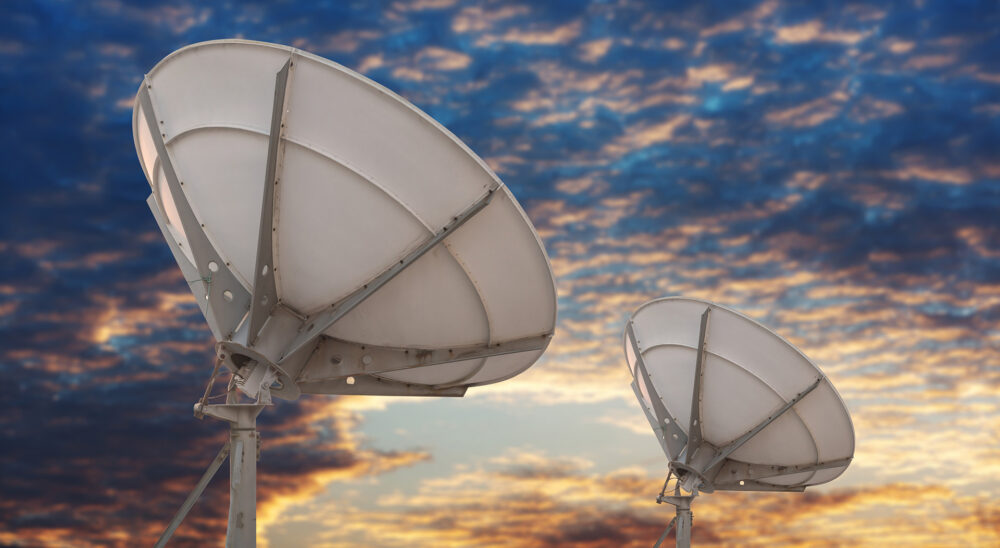Reflector antenna systems are often used in radio astronomy. This is because reflectors are highly directive antennas, which allows for high sensitivity. In many radio astronomy projects, they are used in an array format to increase the sensitivity and resolution of the system. Sensitivity is a primary figure of merit for radio astronomy and often has a frequency ripple, which is ignored in the design of the reflector system. Modelling this ripple is computationally expensive and requires more storage. However, not modelling the ripple leads to a decrease in accuracy.
To provide future designers of reflector systems for radio astronomy with some guidelines on how to effectively include or ignore the ripple effects in their designs, Dr William Cerfonteyn, under supervision of Professor Dirk de Villiers, studied the cause, effect, and implications of this sensitivity frequency ripple for his doctoral dissertation.
Background
Understanding the shape and spectral content of the ripple is important for certain radio astronomy applications. Although no alternative to high-fidelity sampling of the antenna response using appropriate computational electromagnetic simulations was found to accurately characterise the ripple response, the various physical causes of the ripple and their relative impact on the final response are thoroughly considered.
For next-generation telescopes using wideband room temperature low-noise amplifiers (LNA) instead of extremely cold cryogenic systems, the ripple may, in many cases, be confidently ignored during the initial design phase of the system – even for electrically very small systems. The research further shows how the ripple characteristics vary based on the antenna pointing angle and how, in some cases, the spillover energy onto the hot ground may be the predominant effect.
Until now, such characterisations have been neglected in the literature, focusing primarily on the behaviour of the antenna’s main beam – typically directed at a relatively cold sky. For this reason, the research explains that non-ideal effects cause the frequency ripple in receiving sensitivity.
The Frequency Ripple in Receiving Sensitivity
The sensitivity ripple is affected by the ripple in the antenna noise temperature (ANT) and the aperture efficiency (AE) when the antenna and LNA are well matched. Moreover, the radiation intensity ripple determines the ANT and AE ripples, resulting from stray radiation interference due to non-ideal effects affecting the radiation pattern of the full reflector system.
Non-ideal radiation or effects happen when the reflector does not function ideally, typically because it is not infinitely large. The degree of non-ideal radiation relates to the electrical size of the reflector, causing electrically small reflectors to deviate more from the ideal radiation suggested by geometric optics. Additionally, it is emphasised that the ANT is influenced by all directions, impacting the sensitivity as well. Consequently, certain directions or regions are notably more critical than others for the ANT calculation in a specific pointing angle.
In these areas, the ripple in the radiation pattern becomes apparent in the ANT, as anticipated. Heatmaps are created to highlight these essential angles, offering insights into the dominant non-ideal effects contributing to the ripple and demonstrating the strong correlation of the ANT ripple with the pointing angle. Besides being influenced by all directions, the ANT is also impacted by various physical parameters, some of which are explored for their effect on ANT.
Advanced estimations for ANT and AE are utilised during the design of radio telescope projects like the ngVLA. The accuracy of these ANT and AE approximations is investigated and described. Although these techniques provide rapid approximations, they frequently overlook modelling the ripple due to the computationally intensive and storage-demanding precise calculation involved, which is generally unnecessary in the optimisation phase.

Figure 1: Array design is fundamentally plausible as a single large parabolic reflector can be dissected into many smaller parabolic reflectors with the same focus point.
Modelling Efficiency
The modelling efficiency of these methods is analysed, which is crucial for efficient reflector design in radio astronomy. Physical Optics (PO) simulation strategies are often preferred over the Method of Moments (MoM) in larger radio telescope designs. For smaller designs, it is important to consider the accuracy of these techniques.
MoM considers more non-ideal effects than PO, thereby modelling the ripple more accurately. In small designs, the Physical Theory of Diffraction (PTD) can be combined with PO to improve the modelling of non-ideal effects. There is a frequency breakpoint at which the ripple modelled by MoM and PO (with PTD) converges as the electric size of the reflector increases. These techniques are compared and analysed to assess their impact on modelling the ripple of the antenna in smaller designs.
Future Work
Future work will consider possible methods for predicting ripple. One such method combines techniques, including Validated Exponential Analysis (VEXPA), to retrieve a unique signal composition from a sampling rate below the Nyquist rate.
In addition, the feasibility of using geometric arguments or applying a pre-processed ripple for prediction will be discussed. This discussion will also explore the implications of exclusively using far-fields in sensitivity calculations without considering the near-field and suggest investigating its effects.
Download and read the complete dissertation at https://scholar.sun.ac.za/items/4c525d02-93b2-4942-894f-36e024e34697.





